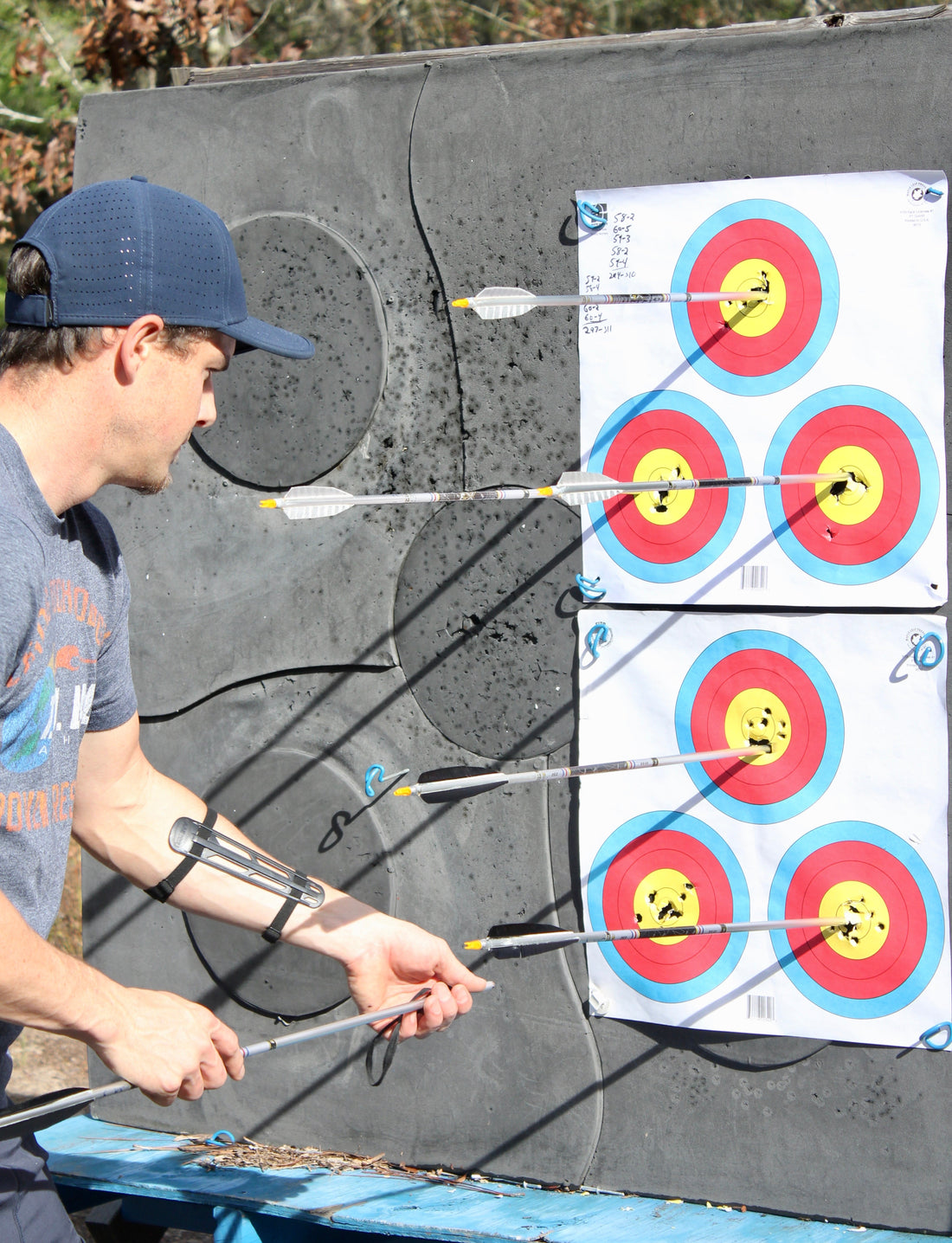
Brace Height Myths Busted: What Really Happens When You Twist That String
Share
Brace height is one of those deceptively simple measurements that sparks a lot of debate in archery circles. From draw weight changes to knocking point shifts, many myths have developed around how string twists affect your setup. In this post, we’re putting three of the most common brace height myths to the test — with real measurements and clear results.
Myth #1: Increasing Brace Height Increases Draw Weight
Claim: If you add twists to shorten the string and increase brace height, your draw weight will go up.
The Test:
-
We measured draw weight using a Last Chance Archery HS4 bow scale.
-
Brace height started at ~8 ⅞ inches using a 70" string on a 25" riser with long limbs.
-
Three draw tests showed consistent readings around 48 lbs.
-
Then, we swapped to a much shorter 68" string, which pushed brace height up to 10.5 inches — a massive increase.
-
We repeated the draw test with the same arrow, same clicker, and same draw length.
The Result:
Draw weight still averaged 48 lbs — proving that brace height does not affect peak draw weight.
It may feel slightly heavier during the initial draw due to increased limb preload, but full draw tension remains the same.
Myth #2: It Matters Which End You Add Twists To
Claim: Twisting the top end of the string does something different than twisting the bottom.
The Test:
We added and removed twists at both the top and bottom of the string, measuring brace height and knocking point each time.
The Result:
There was no measurable difference. Adding or removing twists from either end affects the entire length of the string equally. It’s a closed loop — it doesn’t matter which end you adjust.
Pro Tip:
For convenience, twist from the bottom loop — it’s faster and easier to unhook from your limb tip when the bow is unstrung.
Myth #3: Twisting the String Moves the Knocking Point
Claim: Twisting the string can raise or lower your knocking point — similar to spinning a nut on a bolt.
The Test:
We tied a fixed knocking point at 5/16” above the rest, then added 20 twists to the bottom, removed 20 from the top, and checked for movement.
The Result:
The knocking point stayed exactly where it was — no shift. Twisting the string does not affect the position of tied-in knocking points. This myth only applies to adjustable, movable knock sets, which can ride up or down the serving like a threaded fastener — but only if they’re designed to do so.
So, What Does Brace Height Actually Affect?
Brace height doesn’t impact draw weight — but it does impact arrow tune.
Changing brace height alters where the arrow decouples from the string during the power stroke. This shifts the timing of the archer’s paradox and affects dynamic spine. In our testing and real-world tuning, higher brace heights tend to make arrows behave slightly weaker, which may explain inconsistencies people experience when adjusting brace height mid-season.
Want to Dive Deeper?
📘 Tuning for Performance
Jake’s complete manual for Olympic recurve tuning includes chapters on brace height, arrow selection, bare shaft tuning, walk-back tuning, and more. Check it out on kaminskiarchery.com →
Final Thoughts
Brace height is a powerful tuning tool — but there’s a lot of misinformation out there. Hopefully, this myth-busting session clears up some of the confusion and gives you more confidence when adjusting your string twists.
If you liked this breakdown, check out the full video on YouTube → and subscribe to catch the rest of our Tuning Series.

